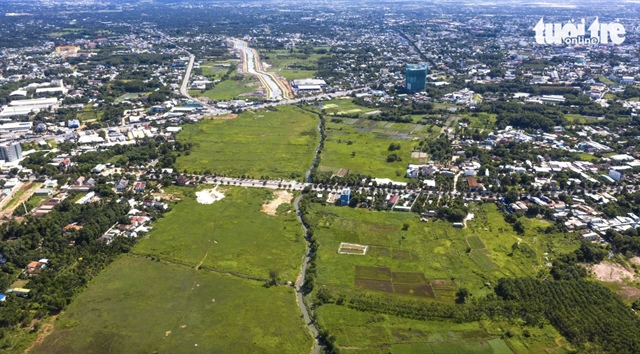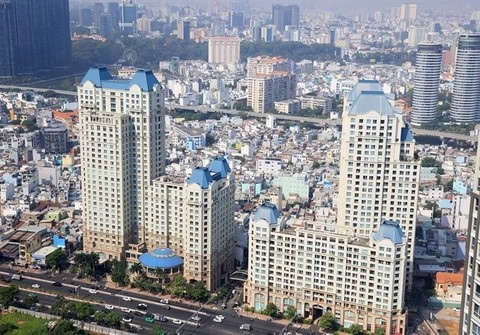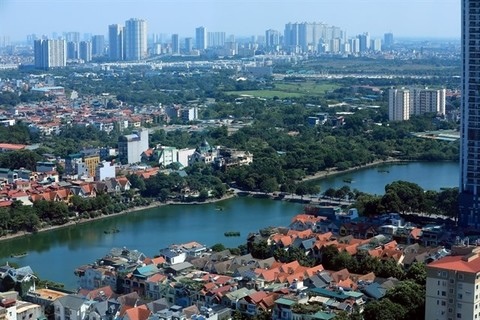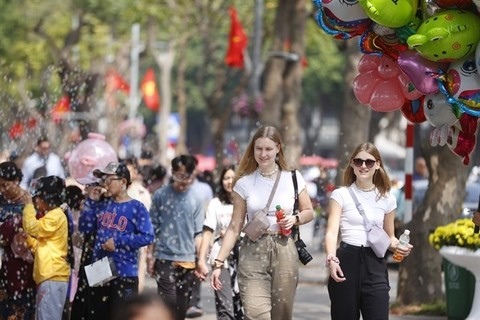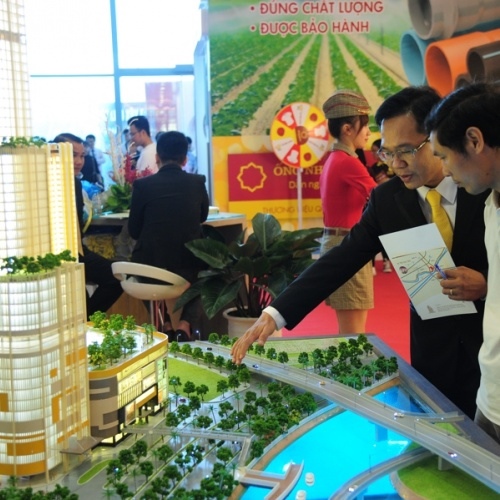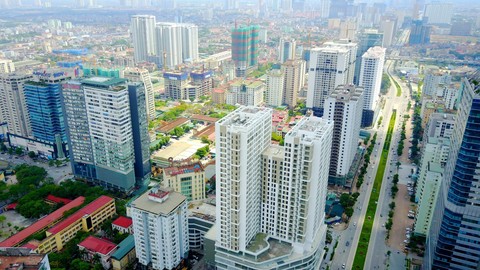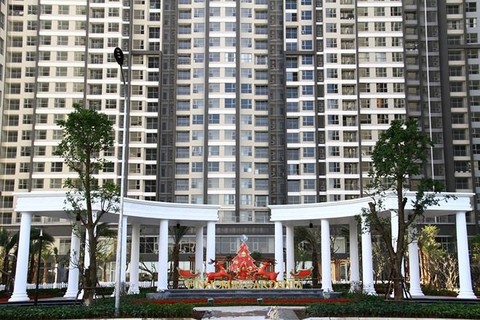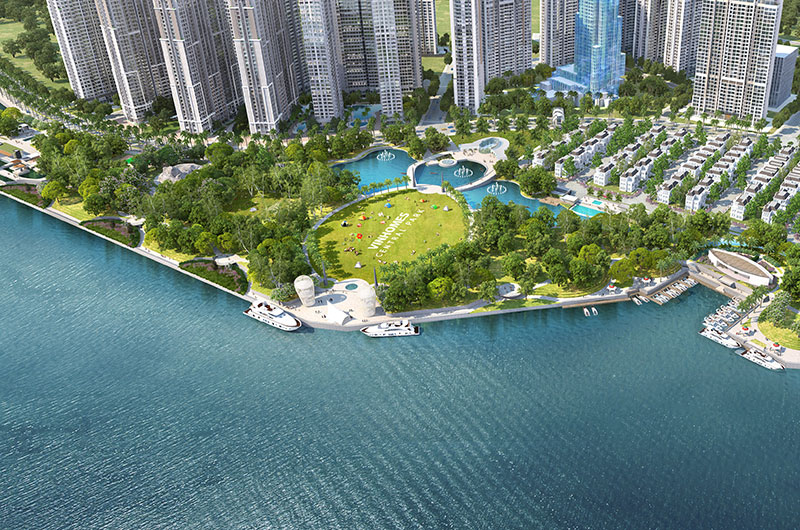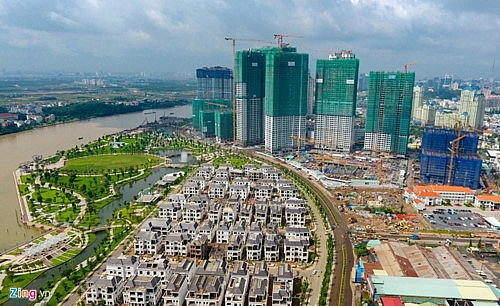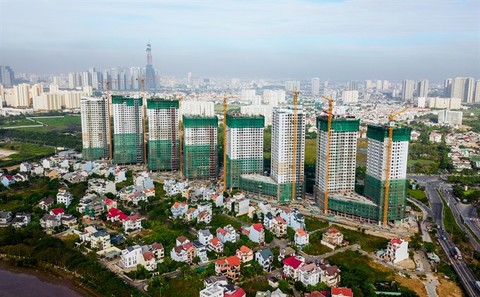Real estate dynamics in year ahead
Real estate dynamics in year ahead
2017 ended with mixed insights on market dynamics in the following years. Developers, buyers, and lessors are chasing after investment opportunities before the market shifts. Vietnam continues to be a promising land for foreign investors, while other neighbouring countries have become mature and thus less attractive.
Condo market gains in quality and quantity
If 2014 was considered the year when the condo market shifted from the recovery during a benign post-recession period to rapid expansion, then 2017 could mark a period of more stability both in quantity and quality.
The mid-end and affordable segments are on the rise. In Ho Chi Minh City, $800-1,500 per square metre mid-end condos accounted for approximately 40 per cent of the market supply and 56 per cent of total sales in the first nine months of 2017. This is a positive signal for the market—as buyers now have more options within their budget, the condo market is becoming more balanced and sustainable.
Within the two previous years (2015-2016), the market in Ho Chi Minh City welcomed more than 80,000 condo units (accounting for 44 per cent of the accumulated total supply since 1999) and Hanoi’s market expanded with 64,000 newly-launched units (33 per cent of accumulated total supply since 1999), which triggered great concerns.
The number of high-end and luxury condo launches increased considerably in this period, especially in Ho Chi Minh City. Even though net absorption was high (more than 80 per cent) these years, the stakeholders are now more prudent. Considering the low level of GDP per capita in Vietnam, if the supply of high-end units keeps rising, there are concerns that a housing bubble—similar to what occurred eight years ago—may materialise.
Developers must have foreseen this too, so in 2017 they did not rush to launch large-scale projects, especially in the high-end and luxury segments. It is estimated that the newly-launched supply in Ho Chi Minh City in 2017 may reach 38,000 units, around the same level as 2016, but the high-end and luxury ones only took up 25 per cent of the total supply, compared to the 30 per cent in 2016.
It is observed that developers now launch projects with smaller scale and pay more attention to quality and design to differentiate their products. More ‘unique’ features were firstly introduced, such as elevators to each floor, various options on finishing materials, private pools, and environment-friendly units.
Amenities are another added value to attract homebuyers, especially in projects further away from the central business districts (CBD). Since the end of 2016, a series of mid-end projects in districts 2 and 9 (Ho Chi Minh City) and Tu Liem District (Hanoi) have provided a good range of amenities which previously could only be found in high-end projects.
Dozens of high-end condos launched during 2015-2016 are in their last stages of construction and will be handed over soon, which will increase the supply on the rental market and the pressure on rent, especially in areas with ample supply like districts 2 and Binh Thanh of Ho Chi Minh City. As a result, the rental yield in Ho Chi Minh City has slightly declined.
According to CBRE statistics, the rental yield of high-end condos in District 2 (Thao Dien and An Phu-An Khanh areas) decreased to 5-7 per cent, 0.5 percentage points down from 2016. With that being said, projects in prime locations offering a nice waterfront view and high quality were still able to achieve a stable yield of 7.5 per cent, even up to 8 per cent in 2017.
Meanwhile in Hanoi, as the supply on the condo rental market is limited and the yield is relatively low (4.5-6 per cent), the market did not witness any significant change.
The real estate projects along Hanoi Highway (District 2, Ho Chi Minh City) most reflected the fluctuation of the market during the past 12 years. The average price of the projects was approximately $1,300 per sq.m in 2005, peaking at $2,600 in 2007, and fell to $1,200 in 2010 to stand at $1,800 now.
Overall, the selling price across all market segments increased by 3-5 per cent on average since 2013. In Ho Chi Minh City, the selling price of most high-end projects hiked up by at least 5-10 per cent during pre- or post-launch. Due to the abundant supply on the primary market, the selling price on the secondary market was almost steady.
In Ho Chi Minh City, the eastern and southern city areas led the market supply, while in Hanoi it was the west and southwest. Phu My Hung is a prime example of a new urban area. Nonetheless, within the next five years, this competition will become more exciting with upcoming urban areas and under-proposed cities, such as Thu Thiem New Urban Area, Saigon Sports City (District 2), Vincity (District 9), and GS Nha Be in Ho Chi Minh City or The Manor Central Park (Hoang Mai District), Vinhomes Smart City (Thanh Xuan District), and Starlake (Tay Ho District) in Hanoi.
More than two years after the Vietnamese government implemented more flexible home ownership regulations applied to non-Vietnamese people, there was little change in the total number of foreign buyers, although 30 per cent of a handful of projects were reported to have been sold to foreigners. Speaking of the market demand, these overseas buyers do not play a crucial role in the recovery of the market, thus the change in regulations only levelled out the playground for foreign and local buyers.
Commercial property good absorption
The office market has been positively impacted by the growing number of new businesses and the expansion of existing ones in Ho Chi Minh City and Hanoi. In the former, two Grade A and three Grade B buildings were launched in 2017, yet the vacancy rate remained low, averaging 8.2 and 2.8 per cent for Grade A and Grade B, respectively, in 2017.
Meanwhile, in Hanoi, the pressure on rent has fallen considerably despite limited new supply, reducing the vacancy rates at Grade A and Grade B offices to 13 per cent from 18 in 2016 and 22 in 2015. Given this good performance, landlords are confident in maintaining rental rates, with some in the CBD even slightly increasing the rate by 3-5 per cent.
On the retail market, both domestic and foreign retailers are aggressively expanding their networks in Vietnam. Following its first-in-Vietnam Zara store, Vincom Center Dong Khoi in Ho Chi Minh City was also the first shopping centre in the country to welcome H&M, a well-known global fashion brand for millennials, who are the driving force of the Vietnamese retail market.
In non-CBD areas, The Garden Mall retail podium in Ho Chi Minh City was renovated and put into operation in the fourth quarter of 2017. The rapid growth of the economy in the past years helped upgrade living standards and the income of Vietnamese people, while contributing to the decade’s largest IPO deal by Vincom Retail ($713 million), the largest retailer in Vietnam with 60 per cent of the market share.
Market outlook
The residential sector will continue to be the focus of the real estate market in 2018, especially as many affordable and mid-end units are expected to be launched. Only a few years ago, buying property used to be a difficult target for low- to middle-income earners, and bank mortgages and favourable payment terms from developers went only a little way towards turning the market more conducive. Some luxury projects which were delayed in 2017 are expected to be launched this year too.
However, the residential sector may not be in the limelight for mergers and acquisitions (M&A) in 2018. It would not be easy for investors to persuade project owners to sell projects which are already under construction. Currently, local developers are a lot more confident and stronger financially than before, especially those who have gone through the 2007 crisis. Therefore, instead of M&A, joint ventures and equity investment would be the preferred method for foreign investors to enter this sector.
In the retail sector, besides the expansion of both foreign and local retailers in 2017, another emerging trend is “popularisation.” With convenience stores and supermarkets becoming more popular, it can be observed that consumers truly care about the “money value” of the goods and services they purchase. Food and beverage (F&B) witnessed good expansion in 2017 and is expected to continue leading the retail segment in 2018. Among inquiries for retail space to lease sent to CBRE, almost 50 per cent came from F&B, mainly from the mid-end rather than upscale companies. On the other hand, new shopping centres need to distinguish themselves and provide a comprehensive shopping experience in order to succeed.
Poor infrastructure continued to pose challenges to market growth and expansion.
Due to the limited land availability in the CBD and its nearby areas, the demand for expansion in neighbouring locations has become stronger, which requires better-developed infrastructure and a well-connected transportation network. Within the past decade, the Vietnamese government made great efforts to complete major roads and highways in Hanoi and Ho Chi Minh City, building new bridges and introducing express buses. However, the growth in infrastructure development is still lagging behind the rate of urbanisation.


